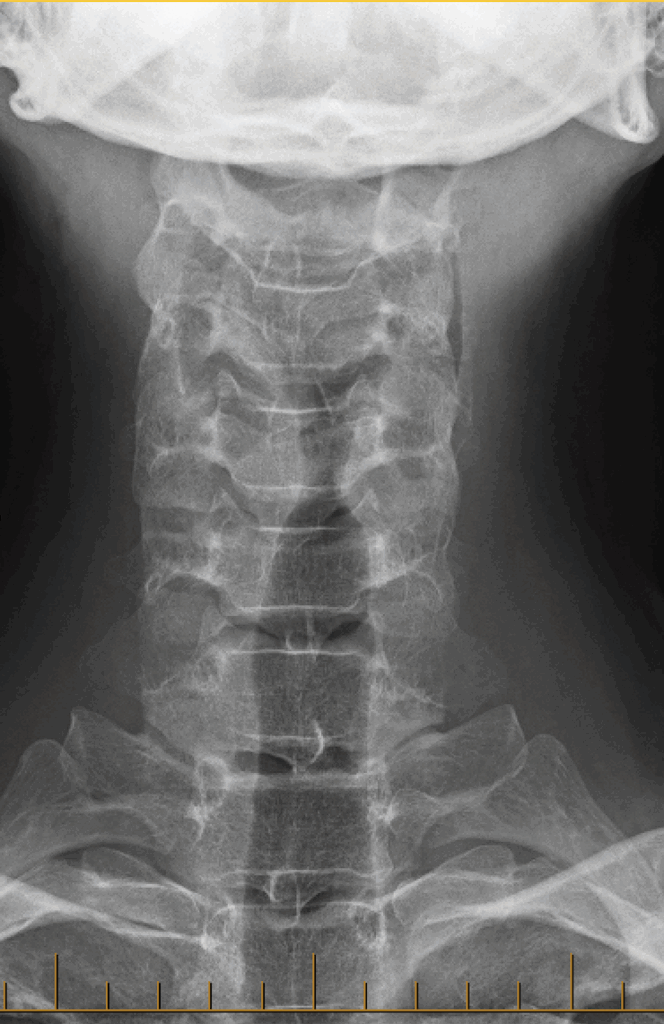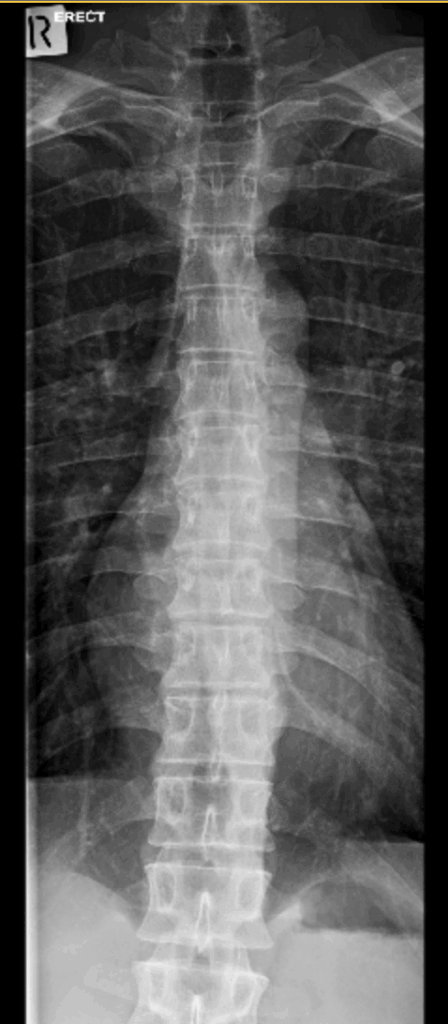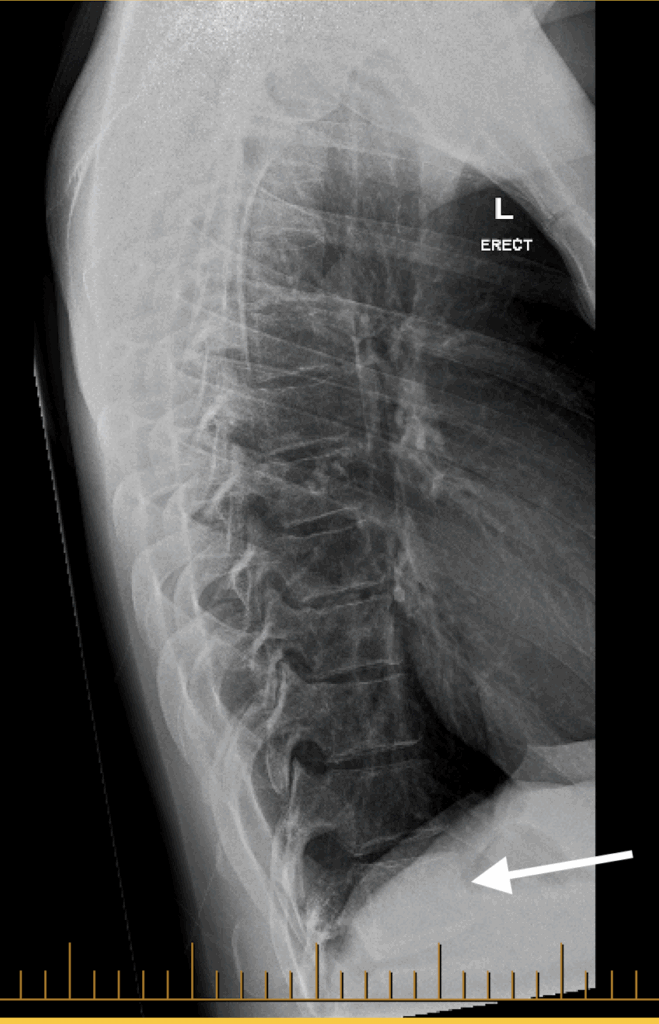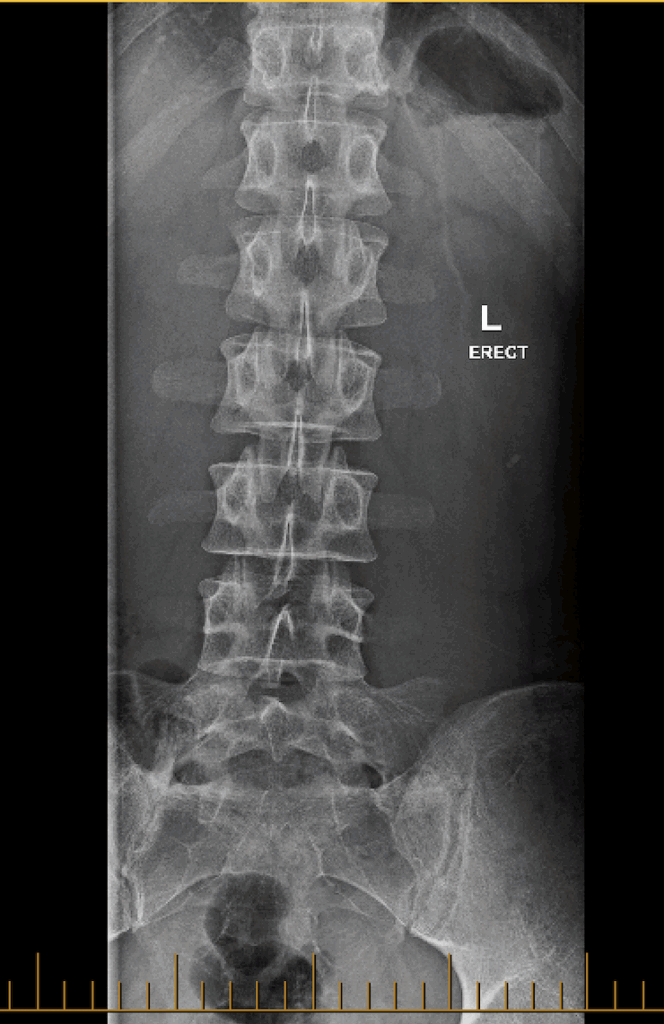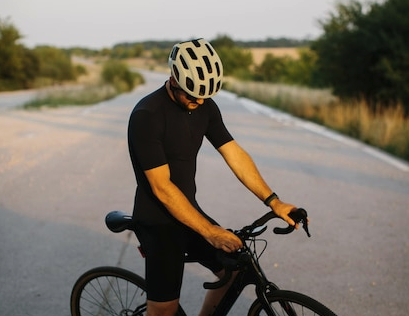Presentation:
Mitch, a 26 year old Landscape Gardener called the clinic asking for an appointment. He’d been referred to us by a current patient – a professional dancer who’d had successful treatment for hip and groin pain. Mitch passed the First Stage of our Three Stage Filter – he was referred by another patient.
Symptoms:
Mitch’s chief complaint was a 7yr history of left lower back and leg pain. He had suffered recurrent episodes approximately every 6 months since high school. The pain was described as “severe” and “sharp” in the lower back but he also had “dull” pain and paraesthesia into both feet and both hands. Lower back pain in a Landscape Gardener is not unusual, but the paraesthesia in both hands and feet should get your attention.
The symptoms were aggravated by long periods of standing and relieved by sitting. Valsalva sign was absent but he later reported that he’d been experiencing erectile dysfunction and intermittent loss of bladder control over the last 4 years. However the erectile dysfunction had been worse in the last twelve months. Pain with long periods of standing that’s relieved by sitting implies facet imbrication – start thinking facet arthrosis, reduced disc height, spondylolisthesis. None of which are unusual but the loss of bladder control and erectile dysfunction should both start ringing alarm bells. He mentioned this to his GP who was not particularly interested and simply suggested he “see a professional”. A professional what? Lion tamer? There was no advice and no referral.
Mitch was now struggling to work in his landscaping business and was considering walking away from it.
He could no longer cycle for more than 20 minutes before the pain and fatigue set in.
He had given up all hope of being in another close relationship and had therefore stopped dating. Mitch was on the verge of losing everything important to him.
History:
Mitch was an avid cyclist and snowboarder and suspects that his symptoms began after a severe snowboarding fall in Canada many years prior. After the fall he could not move for two weeks but didn’t have travel insurance, so he decided to “just wait for the pain to go away”. It was 5 weeks before he could move relatively freely. Apart from the obvious lesson here (always have travel insurance), any impact that creates that level of incapacity must be investigated closely immediately. Sadly, this approach of “waiting” is all too common and rarely ends well.
Apart from the previously mentioned snowboarding fall Mitch had experienced many other falls over the years. These resulted in various minor fractures, such as fingers. When he was 16yo he had a separated left acromio-clavicular, for which he underwent surgical reduction.
He was on no regular medication.
Examination:
Mitch was a tall (183cm) young man, with a lean and muscular physique.
Orthopaedic:
Cervical ranges of motion were all slightly reduced by approximately 20° without pain. Lateral flexion was reduced by approximately 50% throughout without pain. Usually points toward some degree of degeneration, either facet, disc or both. It can also simply be due to joint dysfunction.
Lumbar ranges of motion were all restricted to approximately 20° by pain at the left lumbo-sacral junction with the exception for forward flexion, which was normal. Now we’re getting some more definitive indications.
Supported Adams Test produced mixed results. This is unusual. Normally it will give clear guidance on whether the primary is lumbosacral or SIJ.
Straight Leg Raise produced pain at 40° over the left SIJ. Now we’re getting some more definitive indications.
FABER Test produced groin pain on each side. Bilateral OA?
Cervical Compression Test produced pain at the lumbo-sacral junction. That’s unusual, but it normally means there’s an open disc fissure in the lower lumbars.
Neurological Examination:
All cranial nerves tests were normal and bilaterally equal. I would’ve been surprised if they weren’t.
Cervical myotomes and dermotomes were equal and normal. I wanted to have good look around here given the bilateral paraesthesia, but there wasn’t much to see.
Lumbar myotomes were equal and normal for L1 to L3 but were reduced to 4/5 on the left for Hamstrings, Gluteus Maximus and Gastrocnemius. At this stage I suspected there was some degree of disc injury so none of these findings were a surprise. The question that remains is “what is the nature and extent of the injury?”
What Is Your Provisional Diagnosis?
Lower lumbar disc injury, probably an open annular tear, possibly including some degree of bulge, most likely left posterolateral.
If You Have A Differential Diagnosis or Diagnoses, What Is It (or They)?
Not so much a DD but an additional diagnostic suspicion; hypo-lordotic cervicals, and hypo-kyphotic thoracics. Reduced A-P curves reduce the spine’s ability to disperse load, forcing it onto the discs.
What Further Tests (if any) Would You Do?
I want confirmation of structural state of the spine, especially lower cervicals and lower lumbars. Given the serious nature of Mitch’s overall symptom set, I ordered spinal weight bearing X-rays and a single region lumbar 3T MRI.
Is This A Chiropractic Case?
Yes. Assuming there are no contraindications on the images, Chiropractic is the best place to start. However, “Look Before You Touch”.
With those provisos in place, Mitch has passed the Second Stage of our Three Stage Filter – I’m sure I can help him to a large extent.
Mitch was a delightful young man. He was sincere, honest, humble and dedicated to getting well – I like him. He has now passed the Third and final stage of our Three Stage Filter.
Imaging and Reports
X-rays
Look at the images before you read the report. Some glaringly obvious hints will point out some things but not all.
